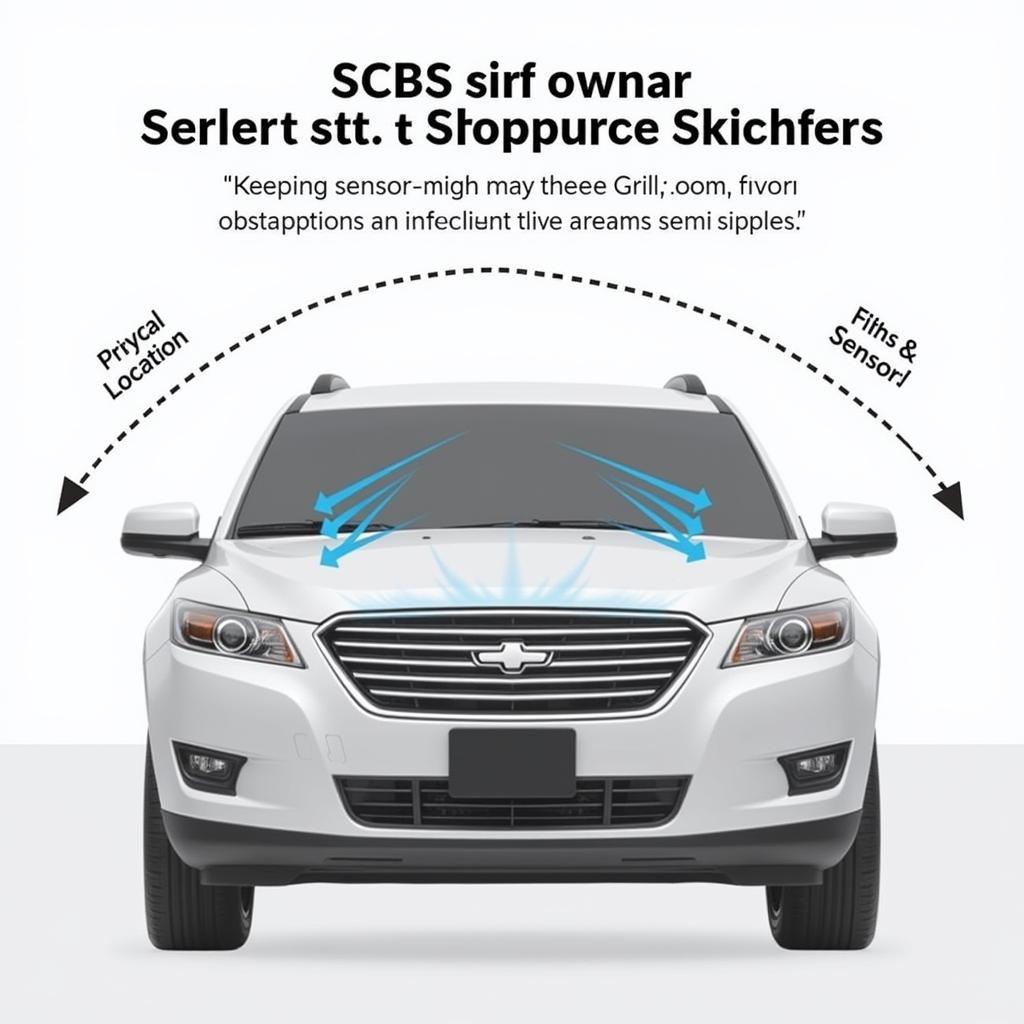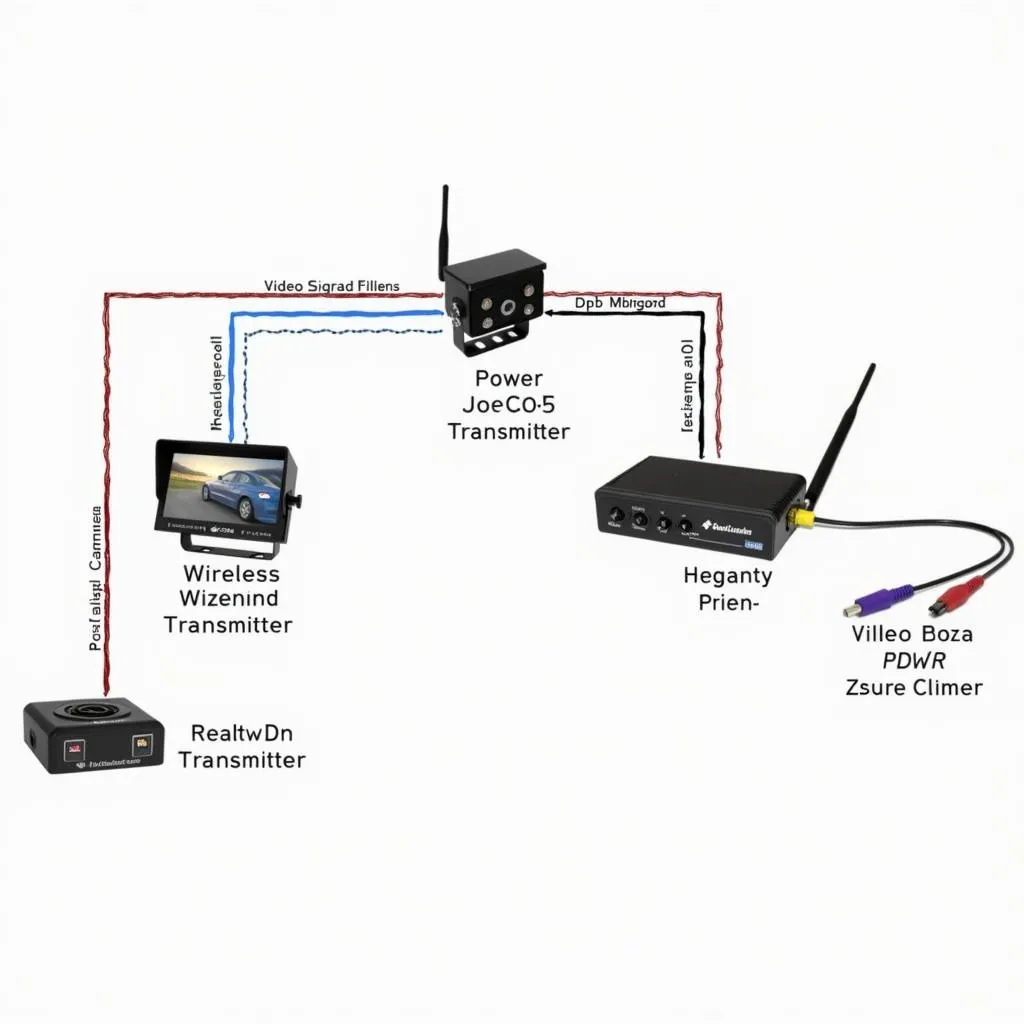Forward collision warning with automatic emergency brake support is a complex system that uses sensors to detect potential collisions and automatically apply the brakes to help prevent or mitigate an accident. While this advanced safety feature is becoming increasingly common in modern vehicles, many car owners still have questions about how it works, when it activates, and what to do if a malfunction occurs.
This comprehensive guide will delve into the intricacies of forward collision warning with automatic emergency brake support, providing you with the knowledge and understanding you need to navigate this technology confidently.
Understanding the Technology: How Does Forward Collision Warning Work?
The system typically relies on a combination of sensors, including cameras, radar, and lidar, to monitor the distance and closing speed to the vehicle ahead. These sensors continuously scan the road, feeding data to the system’s control unit, which analyzes the information in real time.
If the system detects an imminent collision risk, it alerts the driver through a combination of visual, auditory, and haptic warnings. These warnings are designed to be attention-grabbing, prompting the driver to take immediate action.
Automatic Emergency Braking: When the System Takes Over
In situations where the driver fails to react promptly to the forward collision warning, the automatic emergency braking system can intervene. This feature activates the brakes automatically, aiming to either prevent the collision altogether or significantly reduce its severity.
It’s important to note that automatic emergency braking systems have limitations. The system’s effectiveness can be influenced by factors such as weather conditions, road surface, and the speed of the vehicles involved. While it significantly enhances safety, it should not be considered a substitute for attentive driving.
Common Causes of Forward Collision Warning Malfunctions
Like any complex automotive system, forward collision warning with automatic emergency brake support is susceptible to malfunctions. Several factors can contribute to these issues, ranging from sensor obstructions to software glitches:
- Obstructed Sensors: Dirt, debris, snow, or ice buildup on the front grille, where the sensors are typically located, can interfere with their ability to detect objects accurately.
- Software Errors: As with any software-dependent system, glitches or errors in the system’s software can lead to malfunctions.
- Electrical Issues: Problems with the system’s wiring, connectors, or control unit can disrupt its functionality.
- Sensor Misalignment: If the sensors are misaligned due to a minor collision or other factors, they may not function correctly.
Troubleshooting Forward Collision Warning System Issues
When a forward collision warning light illuminates on your dashboard, it’s essential to address the issue promptly. While some issues might be minor and easily resolvable, others require professional attention.
Here’s a step-by-step approach to troubleshooting forward collision warning system problems:
- Check for Obstructions: Inspect the front of your vehicle, particularly the area around the sensors. Carefully remove any dirt, debris, snow, or ice that could be obstructing the sensors’ view.
- Consult Your Owner’s Manual: Your vehicle’s owner’s manual often provides specific instructions and troubleshooting tips for the forward collision warning system.
- Seek Professional Diagnosis: If the warning light persists or you suspect a more complex issue, it’s crucial to seek professional diagnostics. A qualified technician can use specialized equipment to read the system’s fault codes and pinpoint the root cause of the problem.
Maintaining Your Forward Collision Warning System
Regular maintenance can help prevent many forward collision warning system issues. Ensure the front of your vehicle is kept clean, especially during winter months. Additionally, follow your vehicle manufacturer’s recommended maintenance schedule, which typically includes periodic inspections of the system’s components.
Conclusion
Forward collision warning with automatic emergency brake support is a valuable safety feature that can help mitigate or even prevent accidents. By understanding how the system works, its limitations, and common causes of malfunctions, you can be better prepared to address any issues that may arise. Remember, seeking professional diagnostics and adhering to a regular maintenance schedule can go a long way in ensuring the optimal performance and reliability of this critical safety system.


